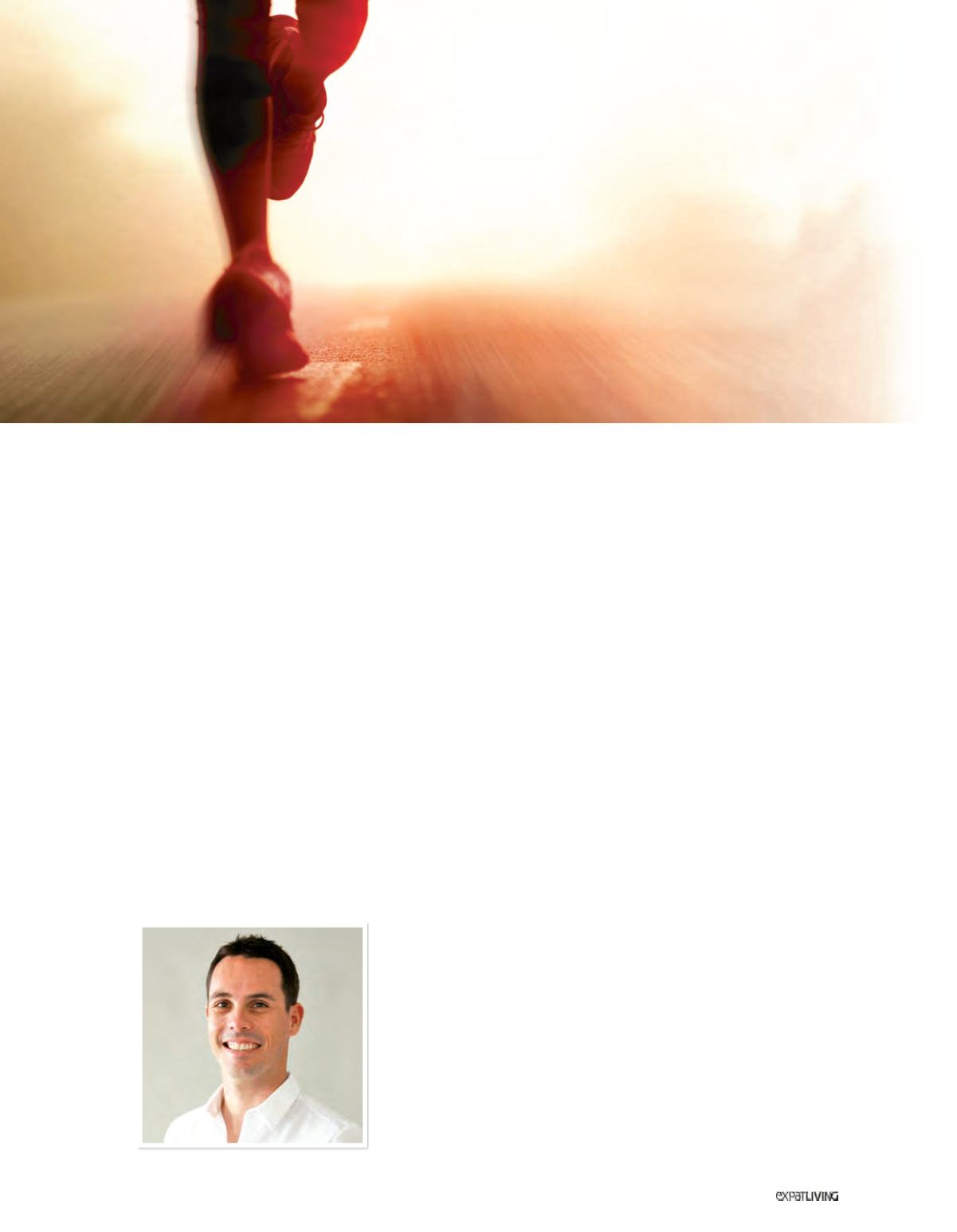

RUNNING
289
October14
COMMENTARY:
RUNNING
With the Singapore Standard
Char tered Marathon just a
couple of months away,
Verne
Maree
talked to former elite
triathlete BEN PULHAM about
running a faster marathon.
Marathon Man
B
en firmly believes that
humans are born to run
long distances. Having run
“obscene amounts” as a
world-class triathlete, right up to 2008
– upwards of 160km in a big week, on
top of cycling and swimming – he’s a
poster boy for that argument. Though
Ben no longer races, he now teaches
others how to do it.
Fortunately for those of us who enjoy
it, running is something you can probably
carry on doing for a long, long time, if
you train safely. “Just the other day, I
heard about an 82-year-old Canadian,
Ed Whitlock, who ran a 3:41 marathon!
At his age, that’s mind-boggling.”
How long does a seasoned runner
need to prepare for the marathon?
To do what we call a focussed build-
up, you should allow at least 16
weeks, possibly 20 if you’re not very
conditioned.
When training for a marathon,
distance is all-important, right?
Not exactly. At Journey Fitness Company
(journeyfitnesscompany.com), we have
a unique training philosophy, what we
call a “smart approach”. Most vital is
allowing enough time for training.
We don’t care somuch about distance;
instead, our approach is based on two
key factors: time, and heart rate. When
you run for the prescribed durations, and
at heart rates that are optimal for you,
your body will self-correct, and you’ll get
the training you need – be it on the flat,
on a hilly course, on sand or wherever.
Working on distance and pace, as most
people do, is a sure-fire way to get hurt.
Our way is not only very effective, it’s
also the safest way to train.
How important is the weekly
long, slow distance run (LSD)?
Sufficient LSD running is crucial for
aerobic training, and yes, the weekly
LSD run is the most important. Why?
During the marathon, you get over
99 percent of your energy from your
aerobic system; less than one percent
comes from your anaerobic system.
Most people think they need to train
their anaerobic system, that training at
a fast pace will help them race faster.
Actually, almost no one is limited by the
speed they’re able to run at; what actually
holds us back is our inability to sustain that
speed. To run faster, you need to improve
your aerobic speed and your aerobic
strength, and you’ll achieve that by running
within the correct heart rate zones.
I chucked away my heart rate
monitor years ago, because it
told me I was working too hard
– despite what I regarded as an
easy pace. Was that a bad move?
Yes, it was. Like you, some of our
clients do feel demoralised at first.
They complain that keeping to the
prescribed heart rate zone feels too
slow, that they’re going little faster
than a walk.
We explain to them that this is a sign
of an aerobic dysfunction, one that will
be fixed over the course of the next few
weeks. As their bodies adapt to the
correct training, they will in time get a lot
faster – and isn’t that what we all want?
Sounds too good to be true! Can
you give us an example?
One of our clients is an ex-professional
Aussie Rules player, who came to us
quite fit in his own way. Having started off
at a 6:30 (minutes per kilometre) pace
for his long run, after a month – literally!
– he was down to 5:30, at the same heart
rate. Through our programme, he lost
8kg and is now doing his LSD runs at
5:00. What’s more, instead of being sick
all the time, he’s in the peak of health.
Another good example is the 50-year-
old Australian who flew in to see us a
couple of years ago. At that time he was



















